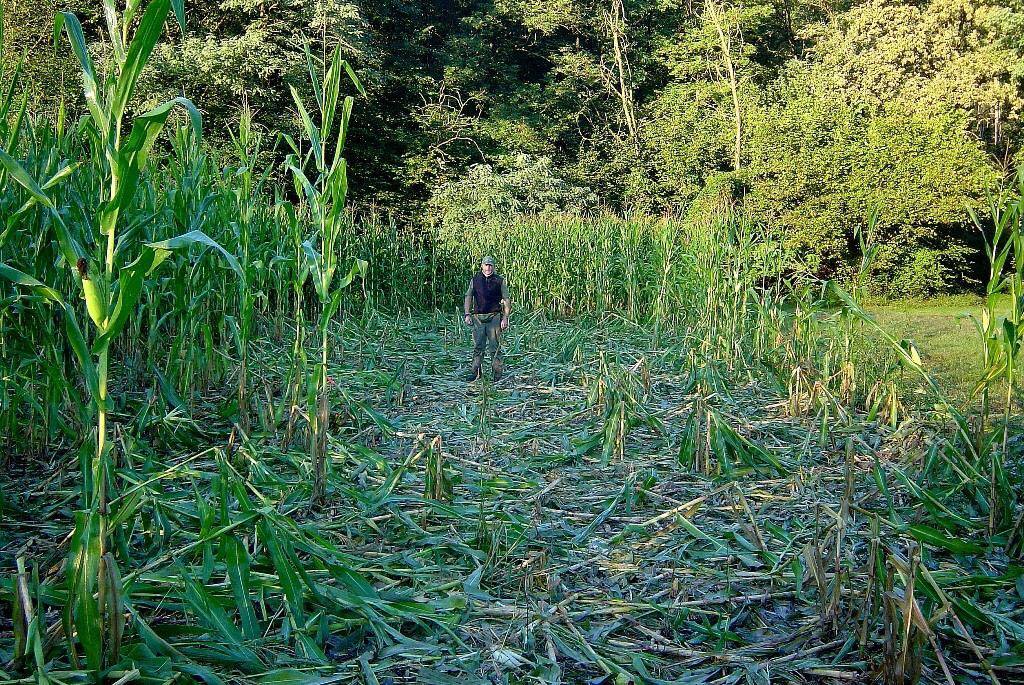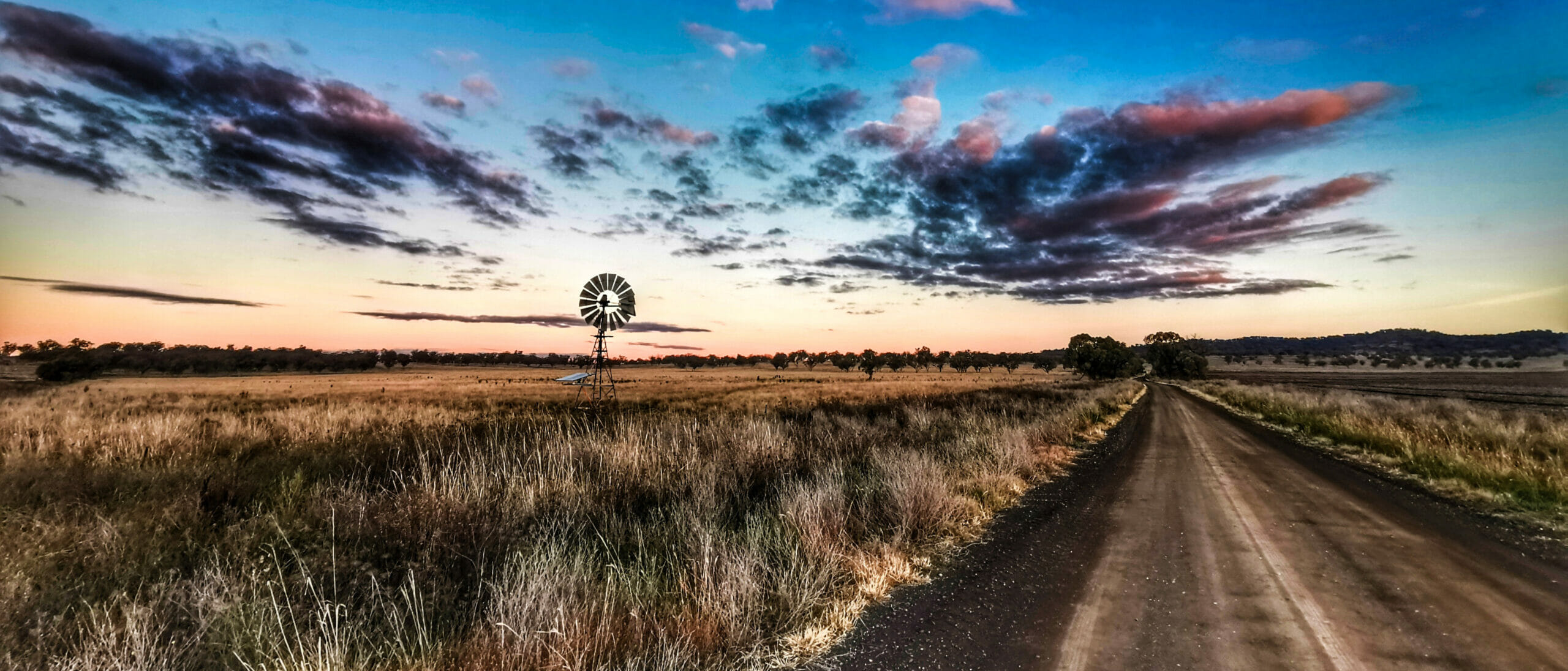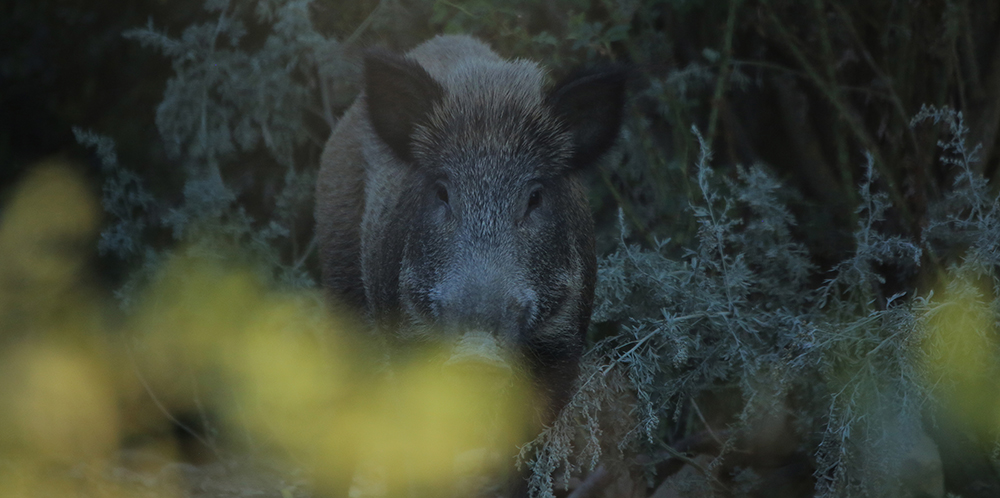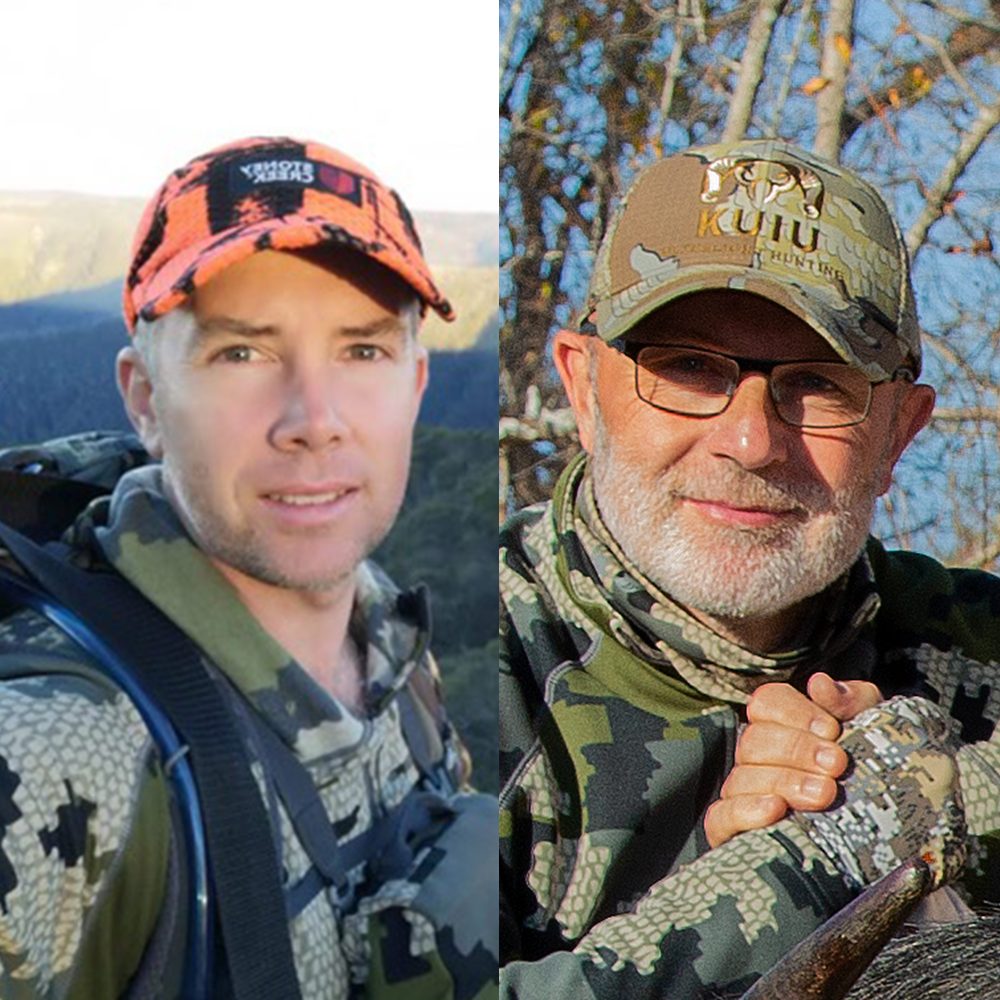
Riccardo Tamburini and Nathan Stuart
rickygh5 edgeoftheoutbackPhotography:
Pulsar Brand Ambassadors
We are proud to have professional hunters in our Pulsar family – they are always keen to share tips and extremely valuable feedback, which helps us develop the best devices in the market. But how does a day in a professional hunter’s life look? How do you manage professional and recreational hunting? Our brand ambassadors – Riccardo Tamburini from Italy and Nathan Stuart from Australia – are here to tell us everything.
How did you come about hunting for a living? Is it a popular choice in your country?
Nathan: Australia has a very unique and sensitive ecosystem. Most of the animals I hunt and shoot are introduced invasive species. These introduced animals are directly linked to the endangerment and, sometimes, extinction of our small native animals. Recreational hunting and contracted shooting are required activities in many cases, especially in agriculture, when large damage can also occur. Hence the flow-on effect and need for professional services where contracted shooting is required due to land type, species, environment, and insurance requirements.
I would not say contracted shooting is a hugely popular choice in Australia as it can be an onerous activity to be involved in. I became involved in the professional space by achieving excellent results, and, at some point, my voluntary services became too much. I either had to shoot and hunt less or follow the path to become a vertebrate pest control – contract shooter.
Riccardo: Being a professional hunter in Italy means being skilled in a lot of other things: you need to be a good photographer, a filmmaker and a copywriter. This way, you will have more chances to find good cooperation with companies involved in the hunting industry who are seeking people to help them to promote their stuff on social media.
In Italy, the wildlife owner is the Government, so you can sell only a few animals after getting some State certifications and qualifications. But times are changing and, probably, in the near future, it will be easier to get more money from wildlife sales and other services offered to farmers like varminting.
Being a professional hunter in Italy means being skilled in a lot of other things: you need to be a good photographer, a filmmaker and a copywriter.
Riccardo Tamburini
Is pest control your main occupation?
Nathan: No, it is only a part-time arrangement for me as I have full-time employment as a mechanical engineer. Generally, I shoot for pest control 2-4 nights a week.
Riccardo: I wouldn’t say so. I also spend a lot of time on social media working with various brands, shooting pictures and filming (either content for brands or following other hunters).
What does your typical work day look like? What are your duties?
Riccardo: I spend a lot of hours on my social media, promoting the stuff made for companies and magazines I cooperate with. Pictures and videos need to be edited before publishing, and this takes a good part of my morning. Three days per week, after lunch, I go to the forest to check my feeding points to have them always ready to use. Late in the afternoon, I prepare to go hunting – you will find me in the forest from 7 pm to 11 pm. I come back home around midnight, but if I get a wild boar, I have to also go to an official slaughterhouse where the wild boar will be checked by a registered veterinarian. When I don’t go hunting, I’m out to film or take pictures.
Nathan: From 7 am to 4 pm, I work in my engineering role. After that, generally in the darkness with a thermal device on me, is when the contract shooting occurs.
Everything with professional shooting is a similar workflow and duties as a regular workplace would be. There are risk assessments, compliances with other safety aspects, etc. Depending on the environment, we liaise with land stakeholders and, sometimes, the local police. Once everything is compliant and safe, we then get to the night shooting. That can be anything from rats and rabbits right up to larger deer species. A lot of my professional shooting is for predator species such as the European fox, feral cats, and wild dogs.
How seasonal is this kind of work?
Riccardo: Pest control needs a constant effort during all seasons, from January to December. Hunting is different, and it depends on the season and regional laws: in January, I go hunting for woodcocks with my dog. From February to mid-March, I am out looking for fallow bucks, youngs, and spikers. May-July is the wild boar season from the stand. In August, I hunt for roebucks. From September to the beginning of November, pheasant and other birds with dogs, and starting from November to the end of January, there is wild boar driven hunt season, fallow deer season, and woodcock with the dog. In between that, I have some hunting trips following clients as a filmmaker.
Nathan: In Australia, it’s a year-round occupation.
Doesn’t hunting for work make hunting for fun slightly less fun?
Nathan: It’s a passion and lifestyle. I enjoy all aspects of hunting and shooting. Maybe except for the paperwork. But I still enjoy recreational hunting and have a clear delineation between the two.
Riccardo: Yes, of course. When I was involved in the fishing industry, I often used Hemingway’s famous phrase: “a bad day of fishing is better than a good day at work”. It’s true, but when your passion becomes a job, you lose a bit of poetry.
Although it’s always much better to spend a day in the wild than working in a factory. If you don’t get or meet an animal, with no chance to pull the trigger of your rifle or to click the camera button, you will think it’s a waste of your time; but I think that a day spent in nature is always a day spent in the best way.
An Axion 2 XQ35 LRF is perfect for a lot of situations. The ability to adjust the image processing algorithms using three different sensitivity levels in combination with a smoothing filter gives you the best image quality under different weather situations.
Riccardo Tamburini
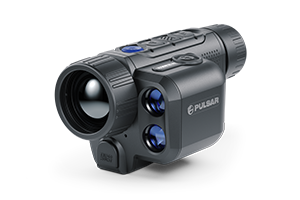
Do you use different devices for pest control and hunting for fun?
Nathan: The majority of my equipment and firearms are the same. Recreational deer hunting is in daylight and under more fair chase conditions, which I find more challenging.
Contracted shooting is mainly at night with thermal, and the main aspect would be using a suppressor. In my state of NSW, Australia, suppressor use is only permitted for me on contracted shooting jobs under strict permit conditions.
Riccardo: For pest control, I use thermal devices, a scope and a spotter. In Italy, the estimated population of wild boars is 2.3 million, and these huge numbers involve a lot of opportunities. We can hunt them in regional parks, where hunting is forbidden, without any time and place limits (generally speaking, we have some hunting distance limitations from streets or houses, of course). It means that we can also use night vision and thermal devices, although they are forbidden in many Italian regions. Pest control also overlaps with the wild boar hunting season, so during the spring and summer, I am out for 4 days per week only for this species.
When I go hunting for fun, I have many options: talking about wild boars, I’m lucky because I live in a region where night vision devices are allowed for wild boar hunting (not just pest control). In many other cases, I use traditional scopes and binos.
What Pulsar devices are your favorite and why?
Riccardo: The Pulsar Thermion 2 LRF XP50 PRO gives me all I need in terms of precision and safety. A high-end device like Thermion has no limits of use: fog, sun, snow, wind, winter, summer… In every situation, it can be considered your most loyal companion.
Then, I also use a spotter to increase my field of view, which in turn increases the chance of seeing wild boars in the woods. An Axion 2 XQ35 LRF is perfect for a lot of situations. The ability to adjust the image processing algorithms using three different sensitivity levels in combination with a smoothing filter gives you the best image quality under different weather situations.
Nathan: I always have enjoyed using my Helion 2 XP50 PRO scope. I will spend hours looking through it at night, and the image is second to none. My Thermion 2 LRF XP50 PRO is working nicely, and I am enjoying the fingertip access to the LRF function. Especially for air rifle and rimfire small pest shooting, where knowing an exact distance is key to an accurate shot.
Nathan Stuart
My Thermion 2 LRF XP50 PRO is working nicely, and I am enjoying the fingertip access to the LRF function.
Before purchasing any night or thermal vision device, please make sure you adhere to the local legislation and only use it when it is allowed. Our ambassadors come from various countries and travel a lot, which allows them to test different devices. We do not encourage or support the illegal use of our devices in any events. If you wish to learn more about export and sales restriction policy, please visit the following link: Export and Sales Restriction Policy.
